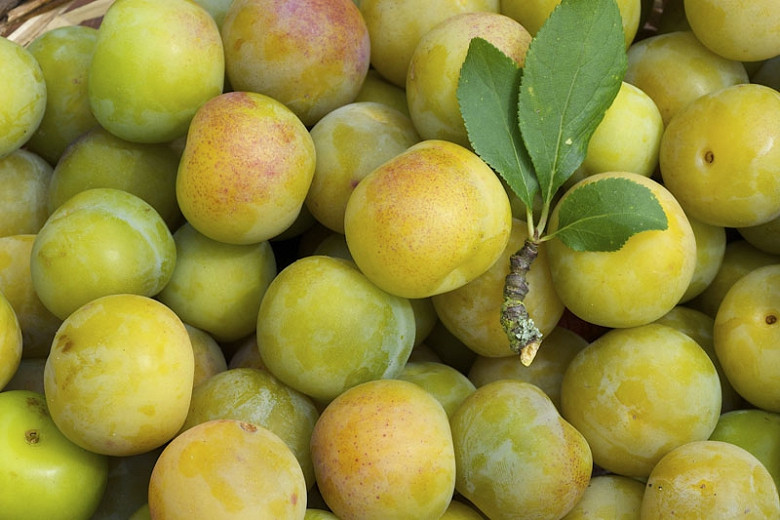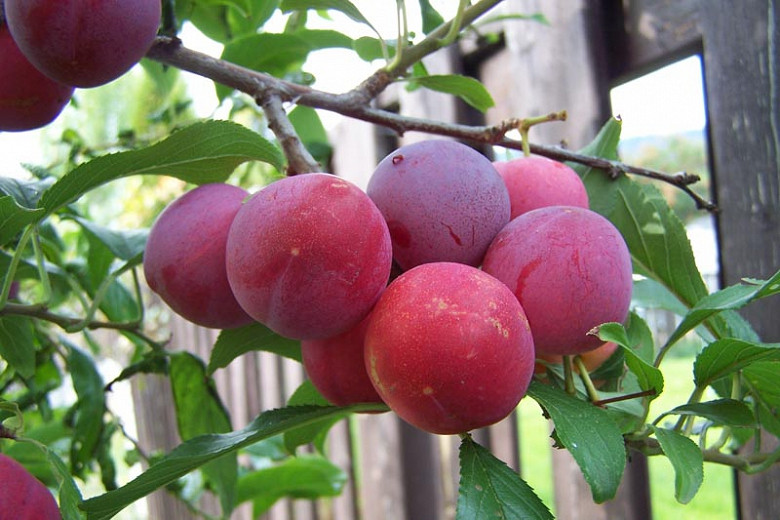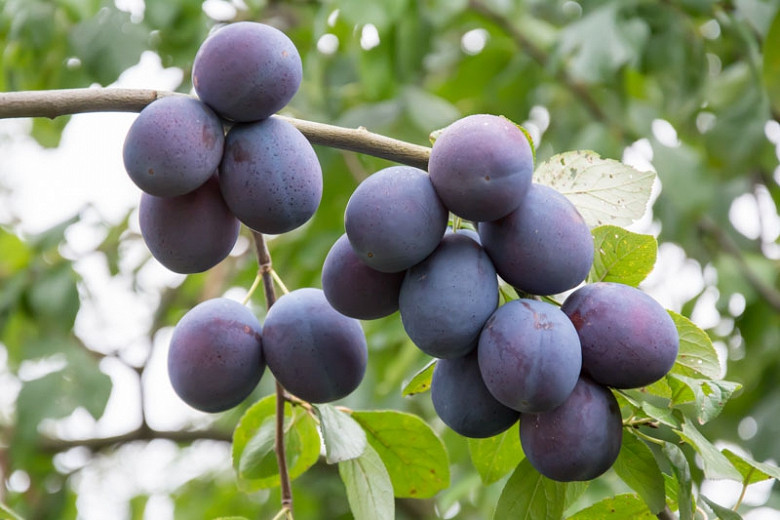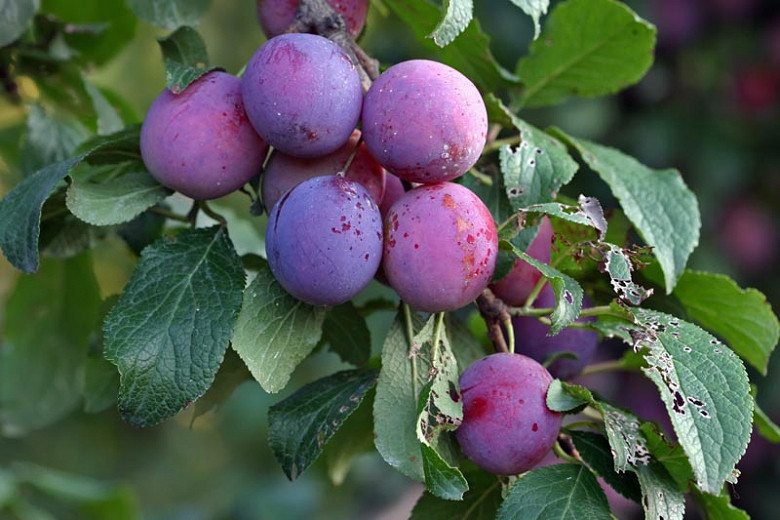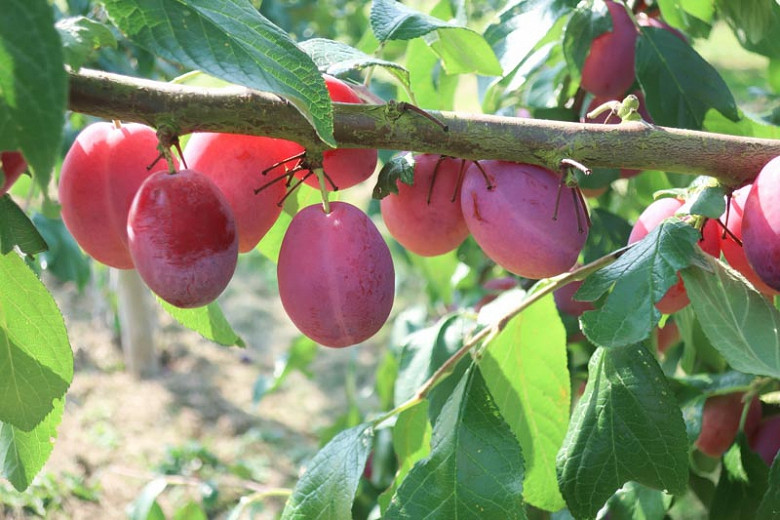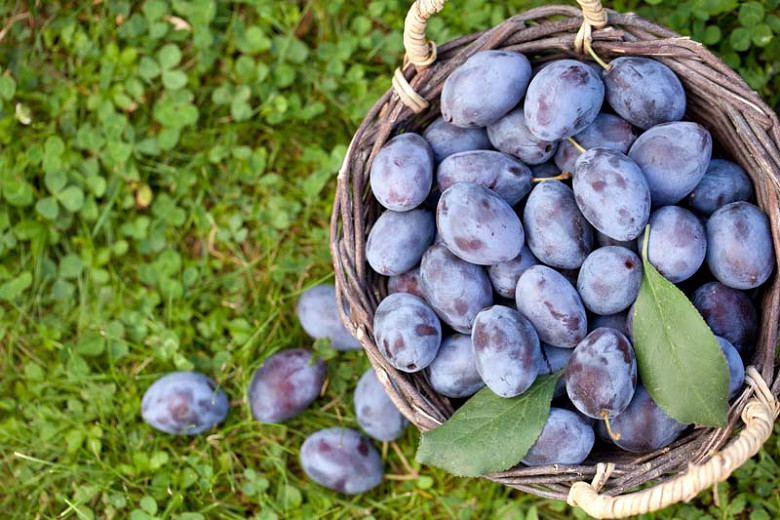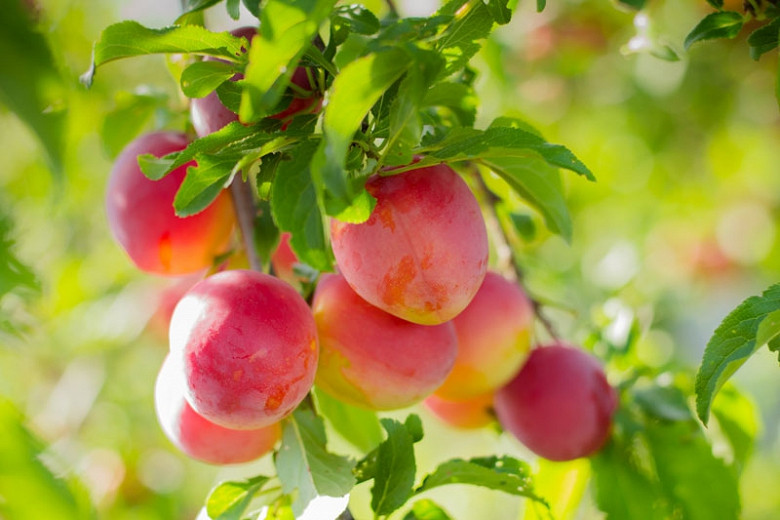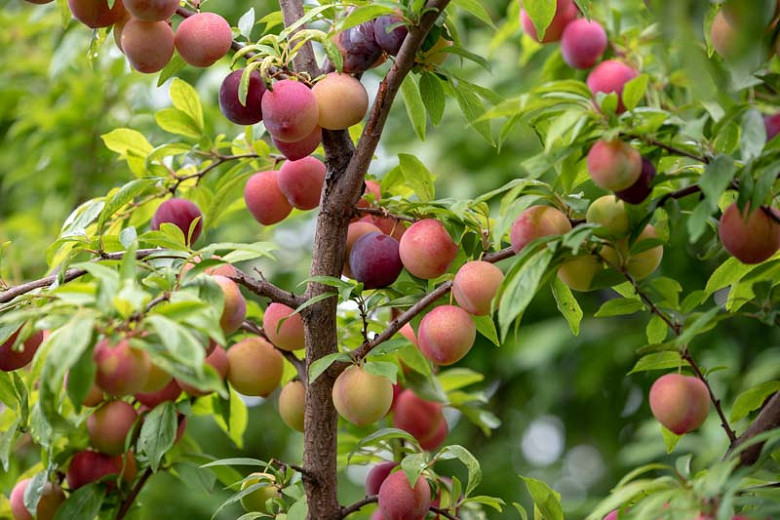Prunus domestica Green Gage (European Plum)
An all-time favorite, Prunus domestica 'Green Gage' or 'Reine Claude' (European Plum) is a small European plum tree with a low canopy clothed in elliptic, finely serrated, bright green leaves. In mid-spring, it bursts into a profusion of sweetly fragrant, white 5-petaled blossoms, creating a spectacular display. They are followed in mid to late summer by a heavy crop of small to medium, oval, freestone, yellowish green plums with amber flesh. Juicy, sweet, and delicious, the plums have a very rich flavor and are perfect for eating right off the tree, canning, or making jelly. This European plum tree is self-fertile but yields more heavily when pollinated with another cultivar. A lovely plum tree in blossom, in leaf, and especially in fruit when the heavy plums hang from delicate branches. A very old variety dating back to Francis I of France.
- Typically grows up to 15-20 ft. tall and wide (4-6 m) at maturity. The dwarf variety grows up to 8-10 ft. tall and wide (2-3 m).
- Performs best in full sun in average, medium moisture, well-drained soils.
- This Plum tree has a chill hours requirement of 700 (hours of temperatures below 45ºF (7ºC) in the winter for their buds to open in the spring).
- Train your plum tree when young to an open-center shape to make sure all branches will always be bathed in light and air.
- Plums require minimal pruning which should be done after flowering when the tree is still leafless. In maturity, prune mostly to let light into the center of the tree and to encourage a moderate amount of new growth for the following year’s fruit. About 20% of the new growth each year is removed to rejuvenate the tree and control its spread.
- Propagate by chip budding or grafting onto a rootstock for fruit. The rootstock will largely determine the vigor of the tree.
- Keep an eye out for plum aphid, caterpillars, fruit tree red spider mite, brown scale, plum moth, bullfinches, silver leaf, bacterial canker, and brown rot.
- Toxic to dogs, toxic to cats, toxic to horses.
Requirements
| Hardiness | 5 – 7 |
|---|---|
| Heat Zones | 3 – 8 |
| Climate Zones | 2, 2A, 2B, 3, 3A, 3B, 4, 5, 6, 7, 8, 9, 10, 11, 12, 13, 14, 15, 16, 17, 18, 19, 20, 21, 22 |
| Plant Type | Fruit, Trees |
| Plant Family | Prunus – Fruit Trees, Plums |
| Exposure | Full Sun |
| Season of Interest | Spring (Mid)Summer (Mid,Late) |
| Height | 8' – 20' (240cm – 6m) |
| Spread | 8' – 20' (240cm – 6m) |
| Water Needs | Average |
| Maintenance | High |
| Soil Type | Loam, Sand |
| Soil pH | Neutral |
| Soil Drainage | Moist but Well-Drained, Well-Drained |
| Characteristics | Fragrant, Showy, Fruit & Berries |
| Attracts | Birds |
